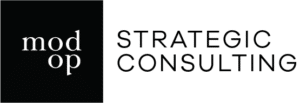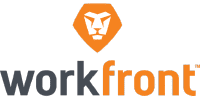In case you haven’t noticed, your customers are working differently since February 2020, and as a result their needs have changed. This is especially true if you are a for-profit or nonprofit organization that provides value to knowledge workers. They may be the same people, but they no longer work in the same way. Predictable, daily patterns of work have been upended. Working remotely also means relying more on digital technologies, and it means your customers have competing demands on their attention and on their time. This may alter their requirements, and therefore their interest, in what you are selling.
Consider the ways consumer-facing enterprises have learned to adapt: Stores don’t need as many parking spaces, but they do need spaces for curbside pick-up and systems to deliver goods to customers. Restaurants have shifted to carry out and are erecting tents in parking lots with outdoor heaters. Colleges and grade schools are combining Zoom classes with limited numbers of students in each classroom and dorm.
Now come back to the B2B digital world. What are the equivalent ways your knowledge-based business must change to accommodate our new reality? Because this new reality of the remote workplace is likely to be with us for a while, here are three ways to determine the changes you must make: Listen to your customers, consider the landscape of your marketplace and make data-driven changes to your internal operations.
Listen to your customers
We at Mod Op Strategic Consulting often speak about the importance of understanding your customers. Now it is even more critical to reach out and show some empathy to understand their needs. “Jobservation” – visiting your customers where they work – now means a video call. Get to know every detail of how your customers now do their work every day and find your new place in that workflow.
Leaders of industry associations are quickly realizing the large annual gatherings they used to host do not translate well online. The large hall with the keynote speaker, after all, is fairly easy to replicate virtually. But the audience is missing the valuable introductions that happen in the corridor on the way and during coffee breaks. Successful associations have responded by digging into their member data to create highly curated small events that bring together specific people who will get value from the qualified interactions. They are using the new conditions to reconsider what they provide online.
Similarly, one public high school in New York City wisely decided to flip its classroom experience, so learning happens online, but support, reinforcement and social/emotional development happens face-to-face. Because the school can accommodate only 30 percent of each grade’s population in their small building at any given time, they decided to bring students in shifts where each student attends only twice a month. When the students are in the building, they are not hearing lectures. They are doing things that cannot be done well on a screen.
Find your bearings on your market map
It’s not just your customers who have changed over the past six months. All the players in the landscape where you operate have changed as well. Take a look at your position in the marketplace and the communities of your industry. Note how you are communicating to your customers and to your partners. You are likely to find opportunities to optimize your activities to deliver new value in the current conditions.
For example, you may now find new partners who were not accessible to you when physical proximity was a precondition of cooperation. Online, you can create joint events with that association that is three times zones away. The flip side, of course, is that your customers also have access to resources that may have been harder to reach just one year ago. You have new players who are competing for the attention of your customers.
Look inward – with data
Your organization has also changed, presenting new challenges. Identify assets you have inside your organization to create new products. Look at what data you have already that can point the way to delivering new value to your customers. If you organize an annual industry event, consider how can you transform that experience into a series of small meetings that provide productive connections for your customers
You say you lack the data you need? Now is the best time to begin collecting it. Off-the-shelf customer relations management (CRM) and content-management tools now make it easier than ever to gain a 360-degree awareness of every time a new or existing customer touches you via email, your website, text or social media. Once you know what each user is interested in, you can create customized content and messaging to meet their needs.
We are all experiencing a level of disruption unprecedented in most of our lifetimes. But it’s also a good opportunity to take stock of what you create, the landscape in which you operate, and what you have to work with to make the most of the new conditions.
Start by taking 15 minutes to complete the Mod Op Strategic Consulting Digital Maturity Index (DDMI). We at Mod Op Strategic Consulting can help you prioritize where to focus.
















